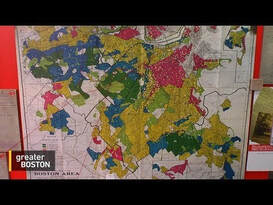|
One example of systematic discrimination against minority communities is redlining. Redlining is the practice in which banks would draw red lines on the map where they would plan to exclude certain people from receiving a loan for a house in that designated area. Redlining prevented black and brown people from moving into more affluent neighborhoods, forcing them to live in poorer areas. The effects of redlining are extremely visible in Boston. The affluent suburbs of Boston are overwhelming white. One example is in the Town of Weston, Massachusetts, which is 90% white. The median salary of a Weston resident is $241,958. In contrast, Dorchester (a section in the City of Boston) is 43% black with a median income of a Dorchester resident totaling $56,318. In Dorchester, 18.5% of the residents are living below the poverty line. One effect of redlining is that poorer neighborhoods have less funding for schools and community buildings. This creates a cycle of poverty that has continued for generations.
The people who live in these two very contrasting neighborhoods are not fundamentally different. No person from Weston is better than a person from Dorchester, or vice versa. The inequality is largely the result of redlining and segregation. If I had every resource possible at my dispense and the favor of all our country’s leaders, I would attempt to make restorations by investing back into minority communities. I would start with funding the public schools, building community health centers, creating sidewalks, making organic produce available, providing people without homes the resources and support they need to live, supporting local businesses, and much more. Works Cited “Weston, MA Demographic Data.” NeighborhoodScout, www.neighborhoodscout.com/ma/weston/demographics. “Dorchester & South Boston PUMA, MA.” Data USA https://datausa.io/profile/geo/dorchester-&-south-boston-puma-ma Image sources: https://projects.newsday.com/cartoons/data/north-vs-south/ https://www.wgbh.org/news/local-news/2019/11/12/how-a-long-ago-map-created-racial-boundaries-that-still-define-boston Comments are closed.
|
|

